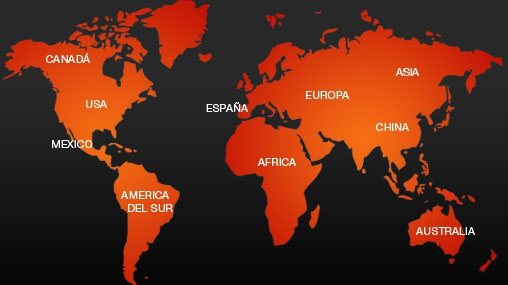- Inicio Acerca de RM Minerales
- Galería de fotos Blog RM Contacto
- Microscopia e instrumentos Pedidos Aviso legal
Copyright 2010-2025
www.rosellminerals.com



Crecimientos estalactíticos de malaquita, de inteso color verde, brillantes, aterciopelados y dispuestos de forma aérea sobre la matriz.
Estéticos agregados estalactíticos de malaquita, con brillo e intenso color. Muy estética.
Los ejemplares de malaquita de esta mina del Alto Katanga destacan por los agregados radiales, en abanico, de finos cristales que, en conjunto, presentan un aspecto aterciopelado y un brillo excelente. Intenso color verde, buen tamaño y muy estético por ambas caras.
Los ejemplares de malaquita de esta mina del Alto Katanga destacan por los agregados radiales, en abanico, de finos cristales que, en conjunto, presentan un aspecto aterciopelado y un brillo excelente. Intenso color verde, buen tamaño y muy estético por ambas caras.
Los ejemplares de malaquita de esta mina del Alto Katanga destacan por los agregados radiales, en abanico, de finos cristales que, en conjunto, presentan un aspecto aterciopelado y un brillo excelente. Intenso color verde, buen tamaño y muy estético por ambas caras.
Estos ejemplares de malaquita presentan crecimientos mamelonares, botroidales a estalactícos, con un color verde muy intenso y brillo sedoso. Si se observan bajo aumento nos muestran que el brillo procede de pequeños cristales de malaquita que forman la superficie de los mismos. La fotografía no refleja todo el esplendor y brillo de la pieza. Se disponen sobre una matriz de malaquita fibrosa. Muy estéticos.
Estos ejemplares de malaquita presentan crecimientos mamelonares, botroidales a estalactícos, con un color verde muy intenso y brillo sedoso. Si se observan bajo aumento nos muestran que el brillo procede de pequeños cristales de malaquita que forman la superficie de los mismos. La fotografía no refleja todo el esplendor y brillo de la pieza. Se disponen sobre una matriz de malaquita fibrosa. Muy estéticos.
Estos ejemplares de malaquita presentan crecimientos mamelonares, botroidales a estalactícos, con un color verde muy intenso y brillo sedoso. Si se observan bajo aumento nos muestran que el brillo procede de pequeños cristales de malaquita que forman la superficie de los mismos. La fotografía no refleja todo el esplendor y brillo de la pieza. Se disponen sobre una matriz de malaquita fibrosa. Muy estéticos.
Estos ejemplares de malaquita presentan crecimientos mamelonares, botroidales a estalactícos, con un color verde muy intenso y brillo sedoso. Si se observan bajo aumento nos muestran que el brillo procede de pequeños cristales de malaquita que forman la superficie de los mismos. La fotografía no refleja todo el esplendor y brillo de la pieza. Se disponen sobre una matriz de malaquita fibrosa. Muy estéticos.
Agregados globulares de kolwezita, de color verde claro a intenso. Contrastan sobre una matriz con cristales de calcita cobaltífera.
Estético ejemplar que nos muestra diversos agregados globulares a estalactíticos de malaquita, aterciopelados y de intenso color verde zonado. Salpicados por pequeños cristales de malaquita que bajo la lupa podemos ver que son pequeños cristales transparentes y definidos. En una matriz congoethita. De esta localidad clásica localidad congoleña para la especie.
Excepcional ejemplar de kolwezita, que se presenta como agregados globulares de cristales de color verde oliva, parcialmente recubiertos por una pátina terrosa amarillenta. Se disponen sobre una matriz de cristales rosados de calcita cobaltífera. Un ejemplar excepcional para la especie. Lo hemos analizado para comprobar el contenido de Co. El promedio de diversos análisis indica una relación Co:Cu de 1:2.3-2.6, coherente con algunos resultados de otros ejemplares con relaciones 1:2. En la muestra aparecen diversos agregados de color negro, a veces recubriendo parcialmente kolwezita, que se corresponde con heterogenita. También pequeños grupos de cristales de malaquita se pueden encontrar.
Ejemplar muy vistoso de dolomita cobaltífera, de intenso color, brillo y cristales translúcidos. Muy estética. De la colección J. Astor (Barcelona).
Cristal analizado de lueshita, de la localidad tipo. La lueshita es un niobato de sodio poco común. Estas muestras salieron solo esporádicamente, y en su mayoría hace más de 20 años. En este ejemplar muestra la presencia de Ca y Ti, probablemente por un contenido de fersmita. El análisis se enviará al comprador.
Agregados de cristales de metatyuyamunita, de intenso color amarillo a naranja, acompañados de erizos de malaquita, junto con carnotita amarilla laminar.
Muy estético ejemplar formado por numerosos agregados botroidales de crisocola, de tonos verde azulados y muy brillantes, salpicados por cristales prismáticos de malaquita, transparentes, brillantes y formando gavillas, que se acompañan de agregados botroidales de intenso color negro de heterogenita. Una pieza distinta de esta clásica localidad.
Desde mi punto de vista, de entre todos los minerales radioactivos conocidos, la kasolita es de los más estéticos. Se presenta en forma de prismas alargados a tabulares, muy definidos, muchos de ellos biterminados y de intenso color amarillo, incluso con cierta transparencia. Se acompaña de cristales de guilleminita aciculares de color amarillo. La matriz presenta cristales de malaquita. Una belleza de una localidad clásica, para ser observada con atención.
Muy estético ejemplar que nos muestra diversos agregados globulares de malaquita, muy brillantes y de intenso color verde. Otros presentan agregados botroidales a estalactíticos aterciopelados. Si se observa bajo la lupa podemos ver que son pequeños cristales de este carbonato de cobre, transparentes y definidos. En una matriz de goethita. De esta localidad clásica localidad congoleña para la especie.
Muy estético ejemplar que nos muestra diversos agregados globulares de malaquita, muy brillantes y de intenso color verde. Si se observa bajo la lupa podemos ver que son pequeños cristales de este carbonato de cobre, transparentes y definidos. En una matriz de goethita. De esta localidad clásica localidad congoleña para la especie.
Estética estalactita de malaquita, de intenso color verde y una disposición muy aérea. Muy buen tamaño. De esta localidad clásica localidad congoleña para la especie.
Rico agregado de cristales de malaquita, brillantes, de intenso color verde, que destacan sobre una matriz de crisocola de tono verde-azulado. Muy estético.
La kasolite es una de mis especies favoritas. En este ejemplar (del Dr. Viñals, Barcelona) podemos disfrutar de varias cavidades con cristales de kasolita lanceolados. Con el color naranja característico, algunos transparentes y aislados, algunos formando agregados. Destacan sobre la matriz verde de malaquita.
Ejemplar de curita muy rico en cristales, de intenso color naranja unos y negros los otros debido a estar recubiertos por heterogenita. El ejemplar procede de la colección Coune y según su antiguo propietario es de los años 90, pero la pieza puede ser anterior. Se disponen de forma muy contrastada sobre la matriz blanca. De la localidad tipo para la especie.
Los ejemplares de heterogenita de Kabolela son de los más buscados por los coleccionistas. Se trata de un agregado botrioidal de esta especie, de la que consideramos como fórmula HCoO2 según los últimos estudios sobre la especie. De intenso color negro, brillante... Una pieza clásica y muy estética.
Grupo de cristales muy definidos de cuprita que nos muestran unas facetas muy poco habituales tanto para la especie como para esta localidad clásica para la especie. Presentan caras muy definidas del cubo y del octaedro, junto con las del dodecaedro. Bajo intensa luz se observa la transparencia roja, pero la superficie muestra un tono gris, los años han pasado. Se disponen sobre una cavidad de cristales de calcita. Una rareza.
